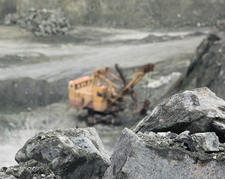British researchers recently published findings in genomics studies which used artificial intelligence to help study mesothelioma, a rare and deadly form of cancer caused by exposure to carcinogenic asbestos fibers. The hope of the findings is that the research and analysis could help improve patient outcomes and improve the prognosis for those who are diagnosed with the as of right now incurable disease, and potentially help find answers to a cure for mesothelioma.
The research undertaken by the University of Leicester Mesothelioma Research Programme reveals that, using AI analysis of DNA-sequenced cancer cells, the disease evolves along similar and repeated paths between individuals. Those paths predict the overall aggressiveness and could show possible individualized therapies which could be applied to help fight the disease.
Professor Dean Fennell, Chair of Thoracic Medical Oncology at the University of Leicester and Director of the Leicester Mesothelioma Research Programme, said “It has long been appreciated that asbestos causes mesothelioma, however, how this occurs remains a mystery. Using AI to interrogate genomic ‘big data’, this initial work shows us that mesotheliomas follow ordered paths of mutations during development and that these so-called trajectories predict not only how long a patient may survive, but also how to better treat cancer – something Leicester aims to lead on internationally through clinical trial initiatives.”
 Asbestos & Mesothelioma Law Blog
Asbestos & Mesothelioma Law Blog



